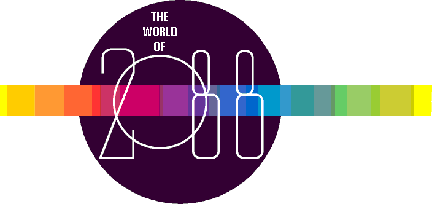


I'm aware of only one accurate prediction in the field of computing. In 1965, Gordon Moore, then of Fairchild Semiconductor and later a founder of Intel, had the audacity to suggest that the density of transistors on integrated circuits would double every 18 months. Amazingly, device physicists and process engineers have managed to make good on Moore's prediction over the course of more than 30 years.
This exponential rate of progress - the fact that everything about computing continues to double at fixed intervals, from the amount of performance you can buy for a dollar to the value of Microsoft stock - is why we can't predict the future of computing. There's nothing else like this, in any other field. If transportation technology had improved at the same rate as information technology over the past 30 years, then an automobile would be the size of a toaster, cost $200, go 100,000 miles per hour, and travel 150,000 miles on a gallon of fuel. A Boeing 747, introduced 30 years ago, would cost hundreds of dollars today, rather than hundreds of millions. Ridiculous? Not in computing, where today's $3,000 laptop personal computer is vastly more capable than the $3 million building-sized institutional computer of just a couple of decades ago. The implications of this sort of progress are impossible to predict.
Let me close with just a couple of predictions that I have borrowed from others. These are 10-year or 20-year predictions, not 90-year predictions-we will live to see them.
From Jim Gray of Microsoft Research: It will soon be possible - in terms of cost and size - to store a complete digital video record of your life. We will figure out how to digest, analyze, organize, and retrieve this information. See someone on the street but can't remember the name? Not a problem! How will this information be presented to you? The advances in user interfaces that we have promised for years will finally be realized in the next decade - acceptable speech input and output, gesture recognition, retinal projection, convincing artificial intelligence. But consider this:
From Bran Ferren of Walt Disney Imagineering (in The New York Times Magazine): The technology needed for an early Internet-connection implant is no more than 25 years off. Imagine that you could understand any language, remember every joke, solve any equation, get the latest news, balance your checkbook, communicate with others, and have near-instant access to any book ever published, without ever having to leave the privacy of yourself. I guarantee you that many of our kids' kids will choose a "Net job" as the preferred way of horrifying their parents.
Want to bet against these? I'll take your money. And that's only the next few decades.--Computer Science and Engineering Chair Ed Lazowska
Technology Makes Money, Prisons Obsolete
If we look at the technological advances of the past 90 years, we can anticipate that those of the next 90 will be equally spellbinding. As a result of a new understandings of how our bodies work, the better nutrition and a complete mapping of the human genome, those that are born near the 22nd century can expect lifetimes of perhaps several hundred years. Preventive medicine will begin in the womb with gene therapy. We can expect organ replacement and repairing of fractured DNA to be commonplace. With our aging population we can expect greater challenges in improving the quality of life, while working on ways to save our planet from natural resource exploitation that may ultimately limits its ability to produce food.
Our greatest technological advances will be in the ability to manipulate matter at the atomic scale. We will truly become latter-day alchemists ... combining the elements to build custom molecules, that will give us new materials and medicines. We will have miniature bulldozers, excavators, sewage filters and power plants. These machines will be able to reproduce themselves and infiltrate those areas of our environment and bodies where they can build and maintain the miniature vasculature of our world.
Computing will also advance to the nanoscale, with storage of information within electron orbitals and spin. Binary will be replaced by tristate and multistate machines that will have the capacity to process and store terabytes of information in microseconds. Sensors and computers will be implanted within our bodies and embedded within the very fabric of what we wear, in the walls of our home and in our places of business. We will have personal information spaces that provide access to vast storehouses of knowledge that we can access and mine instantaneously, using intelligent agents that will filter and reconstruct three dimensional representations of information. Other software and hardware robots will assist us in our work, play and home maintenance. Money will not be needed ... just our physical characteristics act as a "fingerprint" to signal our identity with electronic processing of transactions that automatically adjusts our instantaneous net worth. Since we will be able to track the identity of everybody with sensors within our environment, the nature of crime will change ... indeed, prisons as we know them will become obsolete as we will use new therapies to rehabilitate.
Our transportation systems will become more efficient, and less polluting. But there will be less need to move our bodies to go places, for we will have transportation systems for our senses that use virtual reality to create synthesized 3D spaces, much like the holodeck of Star Trek, where we visit with our friends and family and conduct our business and education.
Everything will be wireless. Central power generation will not be needed as we will have self-contained generators in our homes that use fusion as a means of powering our appliances. Perhaps many of our appliances may be powered by the metabolism of our own bodies.
Our power will be in our knowledge and the ability to integrate and exploit the new affordances provided to us by our technology. The human adventure will continue as we explore our remaining frontiers of the ocean, space and the domains and very limits of human thought. In 90 years we will understand more about consciousness and the way the mind works. But will we be happy?--Human Interface Technology Lab Director Thomas Furness
Predictions--Examples of Human Hubris
We cannot project 90 years into the future; it is futile. Projections are based on merely extending observed patterns of the past into the future, on the assumption that the milieu surrounding the subject matter stays constant and continues those forces which have produced the observed pattern.
Technologies are not autonomous. They are shaped by social, economic, political and cultural phenomena. For example, if the patent laws change, the future of biotechnologies changes (Before the 5-4 Supreme Court decision allowing the patenting of an engineered microbe, virtually no one believed that living organisms were patentable; even after the decision, most commentators doubted it would be extended to mammals, which the patent office has done.)
Since these social phenomena can be quite volatile, predicting technologies is an example of human hubris. Even the National Security Agency apparently was surprised by the overthrow of the Shah of Iran, the collapse of the Berlin Wall and Soviet Communism, etc. I have my students read an article from some 25 years ago predicting portable nuclear reactors as consumer items and other developments, made by eminent scientists and public officials; this is in the syllabus to show how absurd this approach can be. Remember how the Green Revolution was going to end world hunger?--Technical Communication Professor Philip Bereano
The Six Million Dollar Man Is a Bargain
At present, millions of medical devices are implanted in humans each year. At present, millions of medical devices are implanted in humans each year. These include pacemakers, blood vessel replacements, hip joints, eye lens implants, drainage tubes, heart valves and cochlear implants. The devices save lives and improve the quality of life. But they never work as well as the original part being replaced. Basically, the body views most of the materials we now use as "foreign objects" and simply walls them off. Thus, we get aberrant healing and poor mechanical and electrical communication between the implant and the body. The path to the future of medical implants demands that the body recognize these devices as "natural" and heal them in a facile manner.
Science fiction writers have had no problem imagining where biomaterials should go. The Tin Man of The Wizard of Oz, The Six Million Dollar Man, RoboCop and StarTrek's Borg have all been seamless integrations between metals, plastics, electronics and living flesh. Evidence suggests this seamless integration can really be achieved.
Envision prosthetic limbs that heal into the skin for a bacterial seal, the bone for mechanical support and the nerves for control. An artificial heart that functions about as well as a healthy natural heart would--extending hundreds of thousands of lives. A robust artificial pancreas could improve the quality of life for millions, as could an electronics-electrode array artificial eye for the vision impaired. Finally, can "dip-stick" diagnostic devices be built that offer early home detection of cancers and other life-threatening conditions? The potential now exists to engineer synthetic surfaces so that they control biological reactions with precision. Thus, we can imagine creating a new generation of biomaterials that might revolutionize health care and diagnostics.--UW Engineered Biomaterials Director Buddy D. Ratner
Sorry Einstein: Biology Replaces Physics as Science's Top Dog
As for my thoughts on the future of biochemistry in the next century, I can only state at this time that the complexity of the living process, as has been learned within the past 50 years, calls for new approaches and thinking. Physics, long the dominant determinant of thought and ideas in science, has been displaced by the biological sciences which display the extraordinary complexity that defies or belies many of the ideas promoted by physicists and chemists through which much of our ideas in the present century have been promoted. Hence I predict new modalities of thought in which systems analysis or concepts involving organized networks of cellular processes will come to the forefront of the biological sciences. Of course, early in the next century, much of the so-called Human Genome Project will have been completed with the promised "encyclopedia of genetic information". However, along with that will be the evidence that knowledge of the genome and its constituent genes does not give knowledge of how the living cell or organism is constructed and the multiple types of physiological processes are regulated. Hopefully the next century will see a more appropriate and detailed construction of the probabilistic schemes or networks of the living process rather than the simplistic and absolutist ways of current thinking. Sorry I won't be around.--Martin Rodbell, 1994 Nobel Prize in Medicine
Predictions Links:
Send a letter to the editor at columns@u.washington.edu.